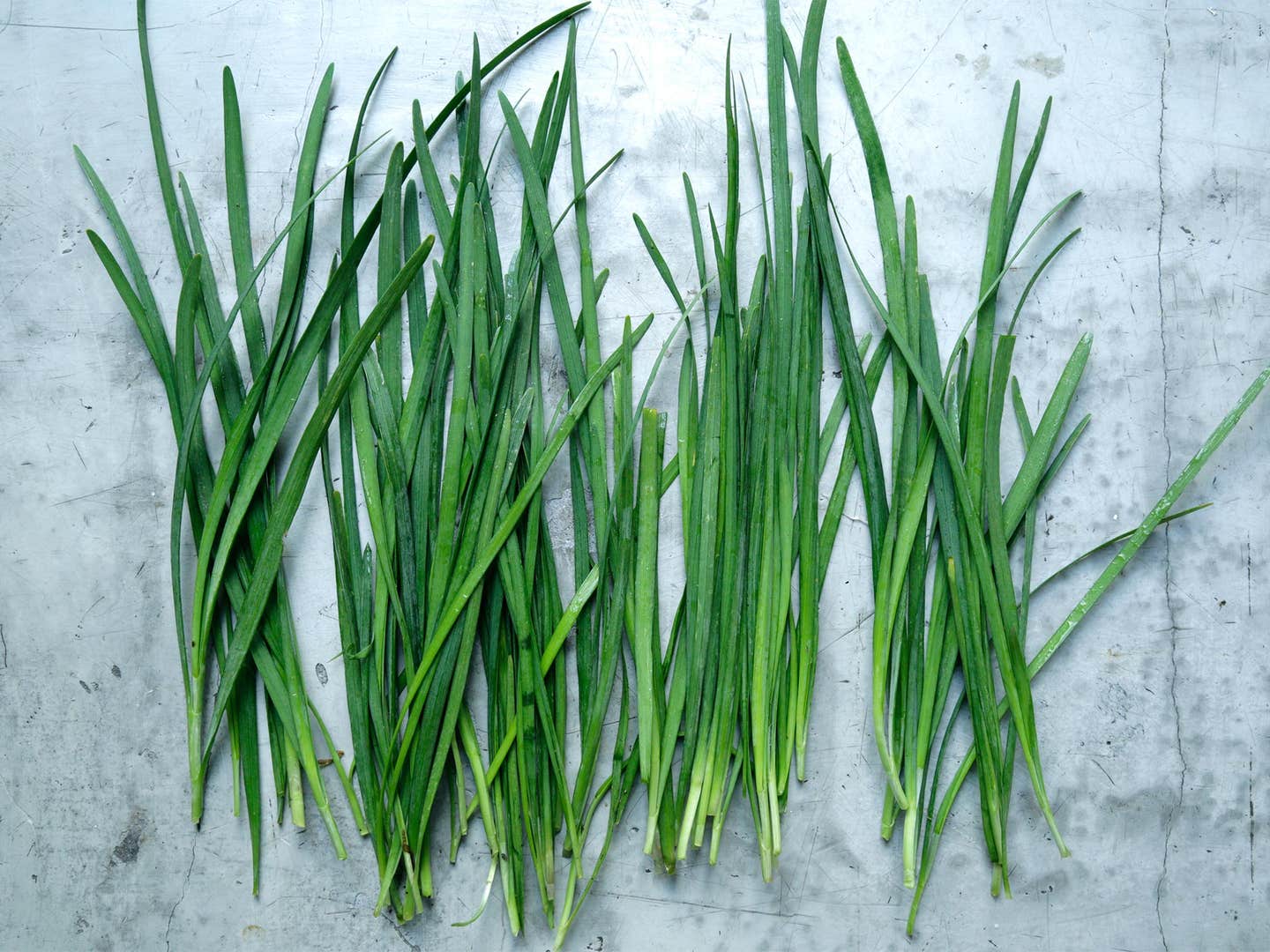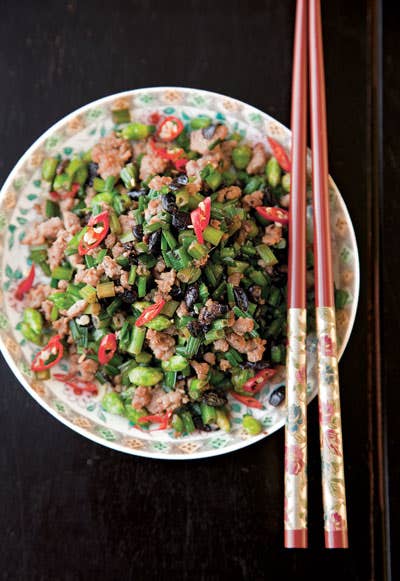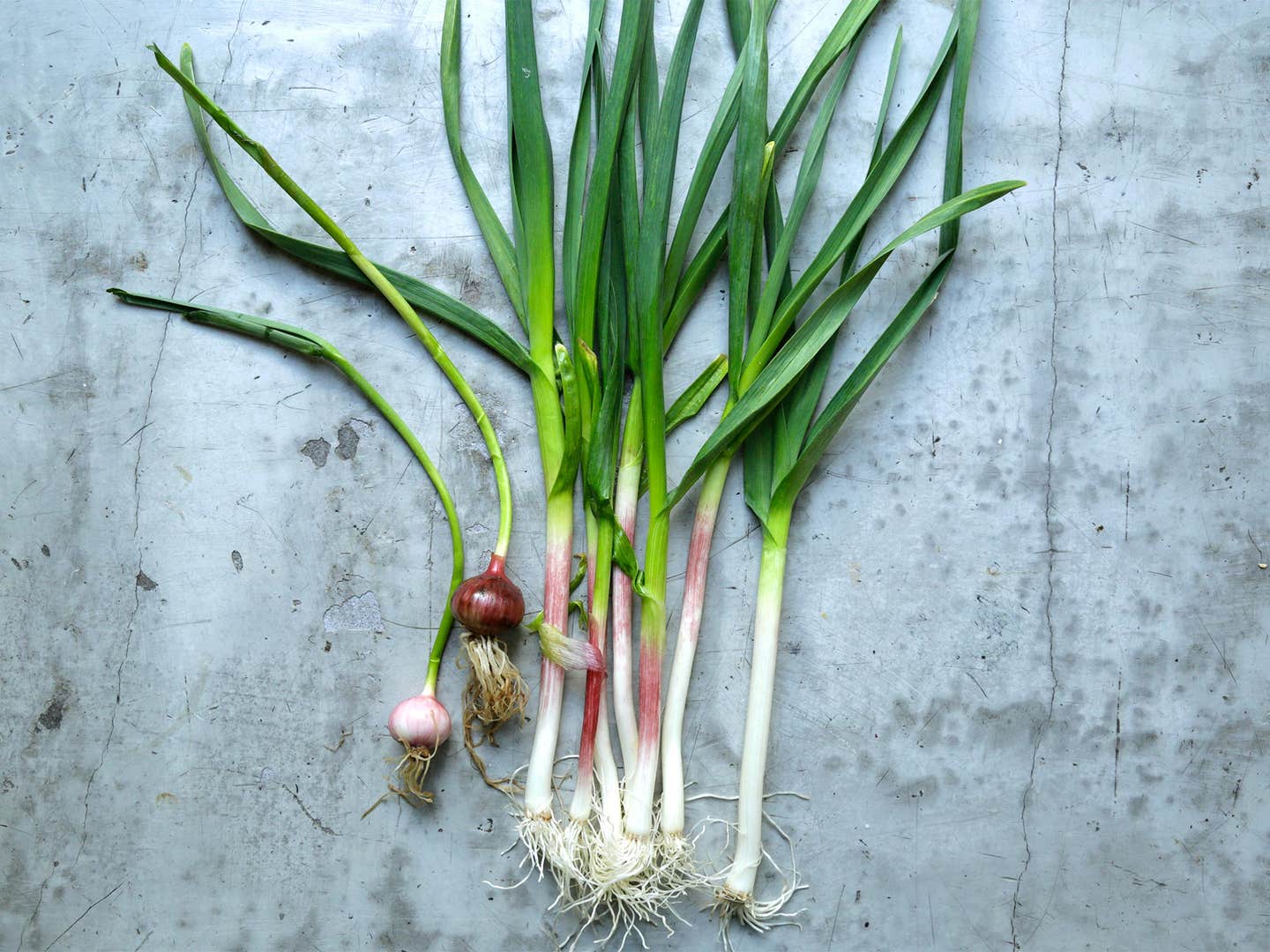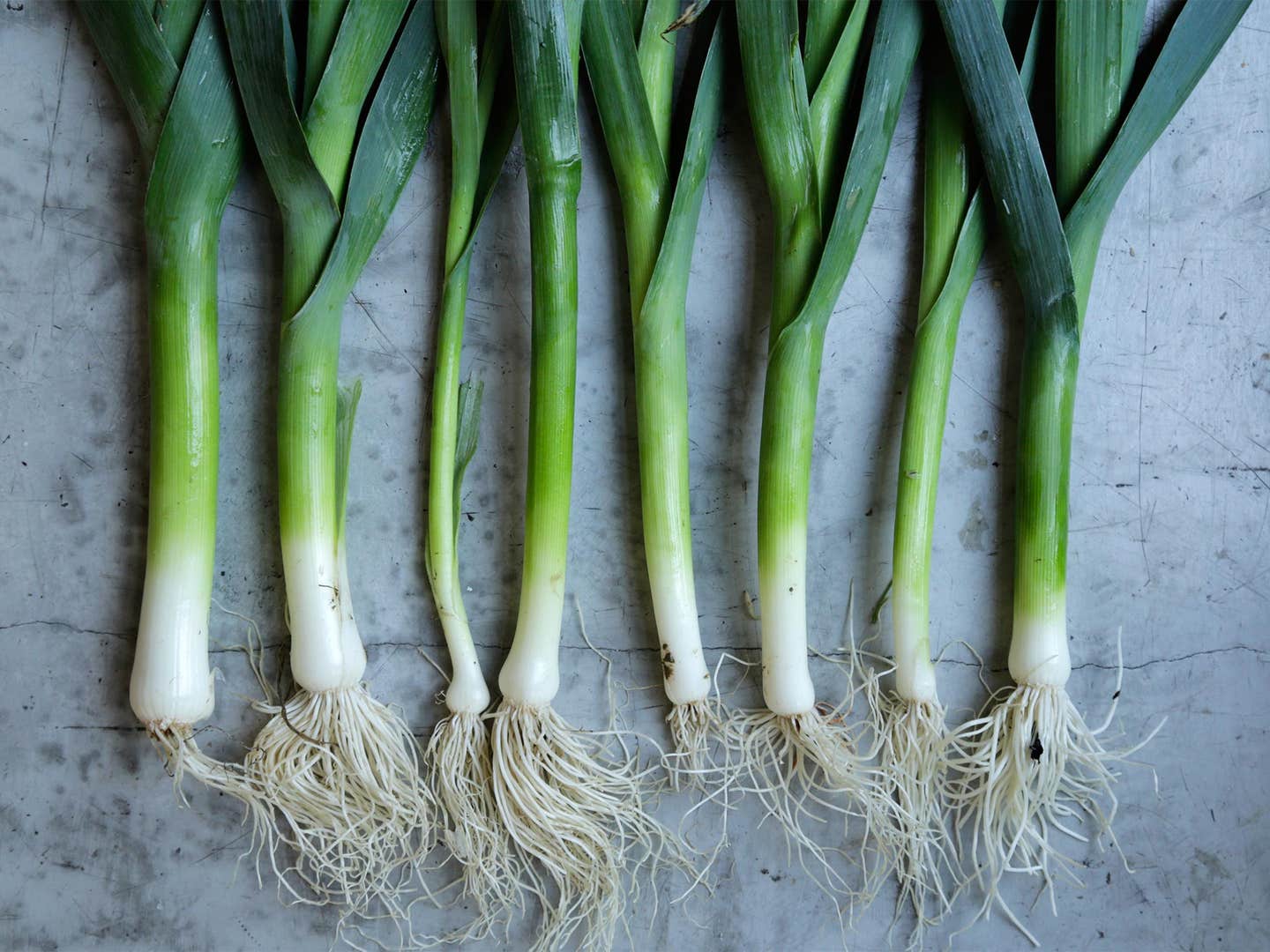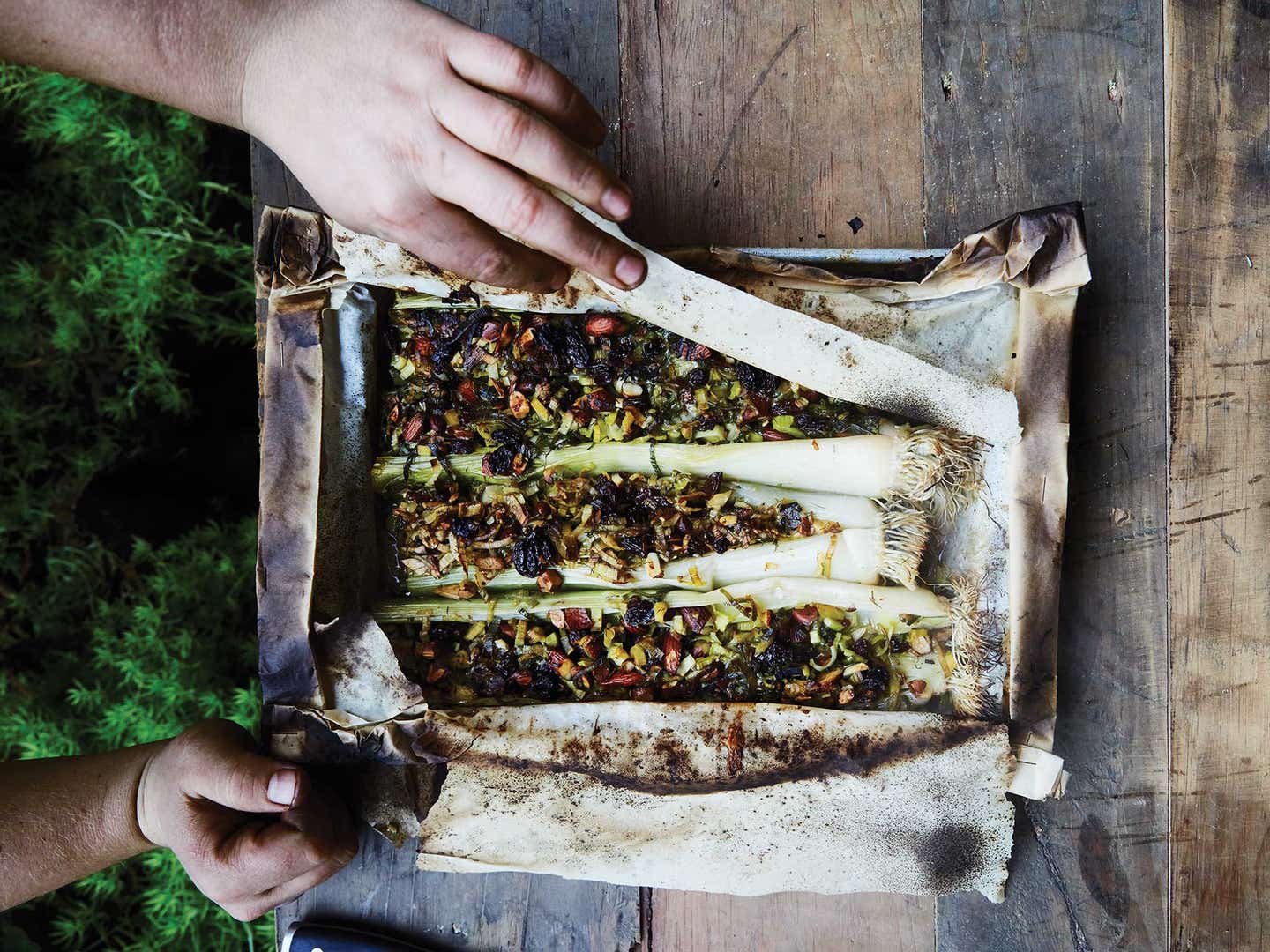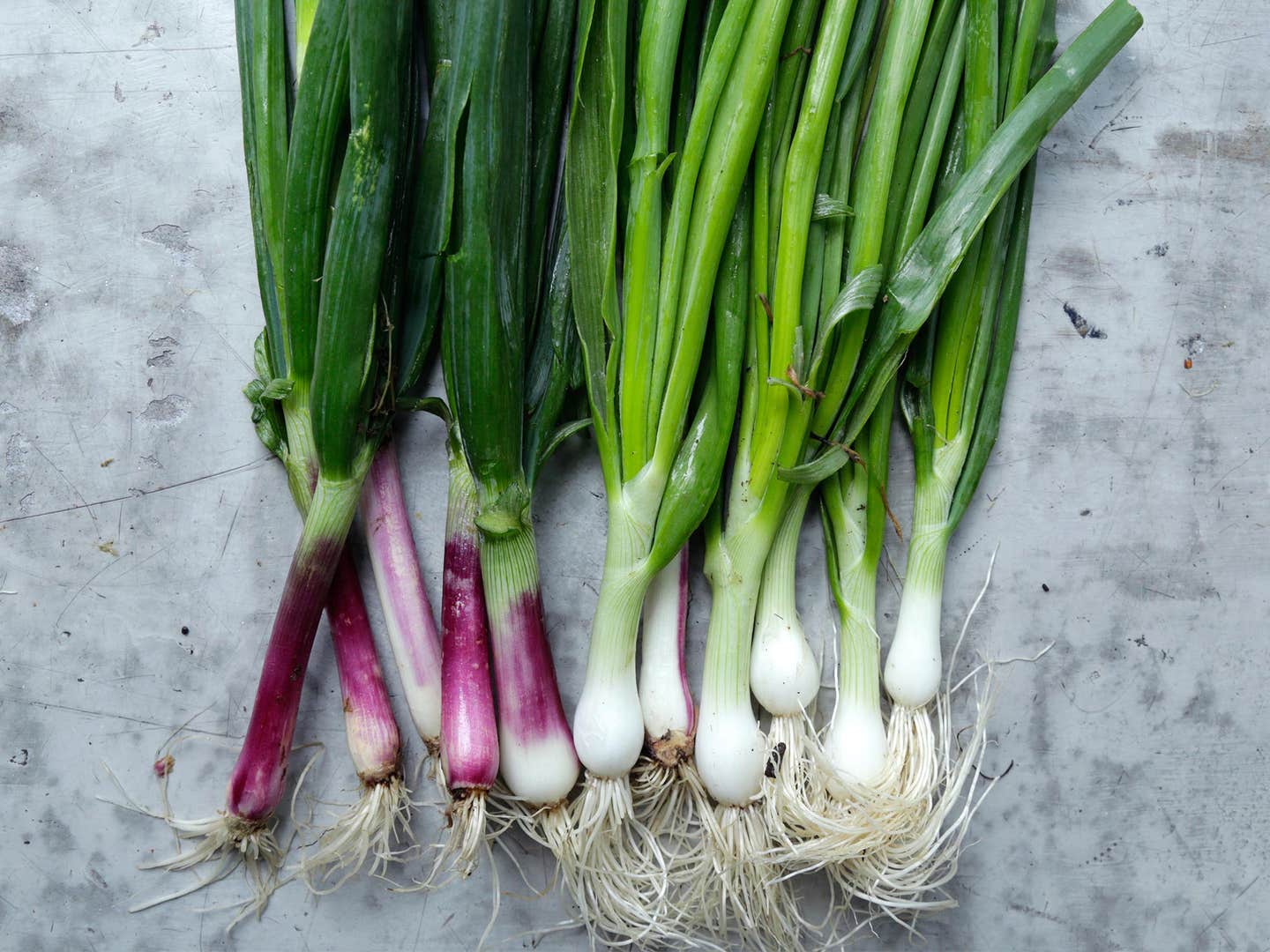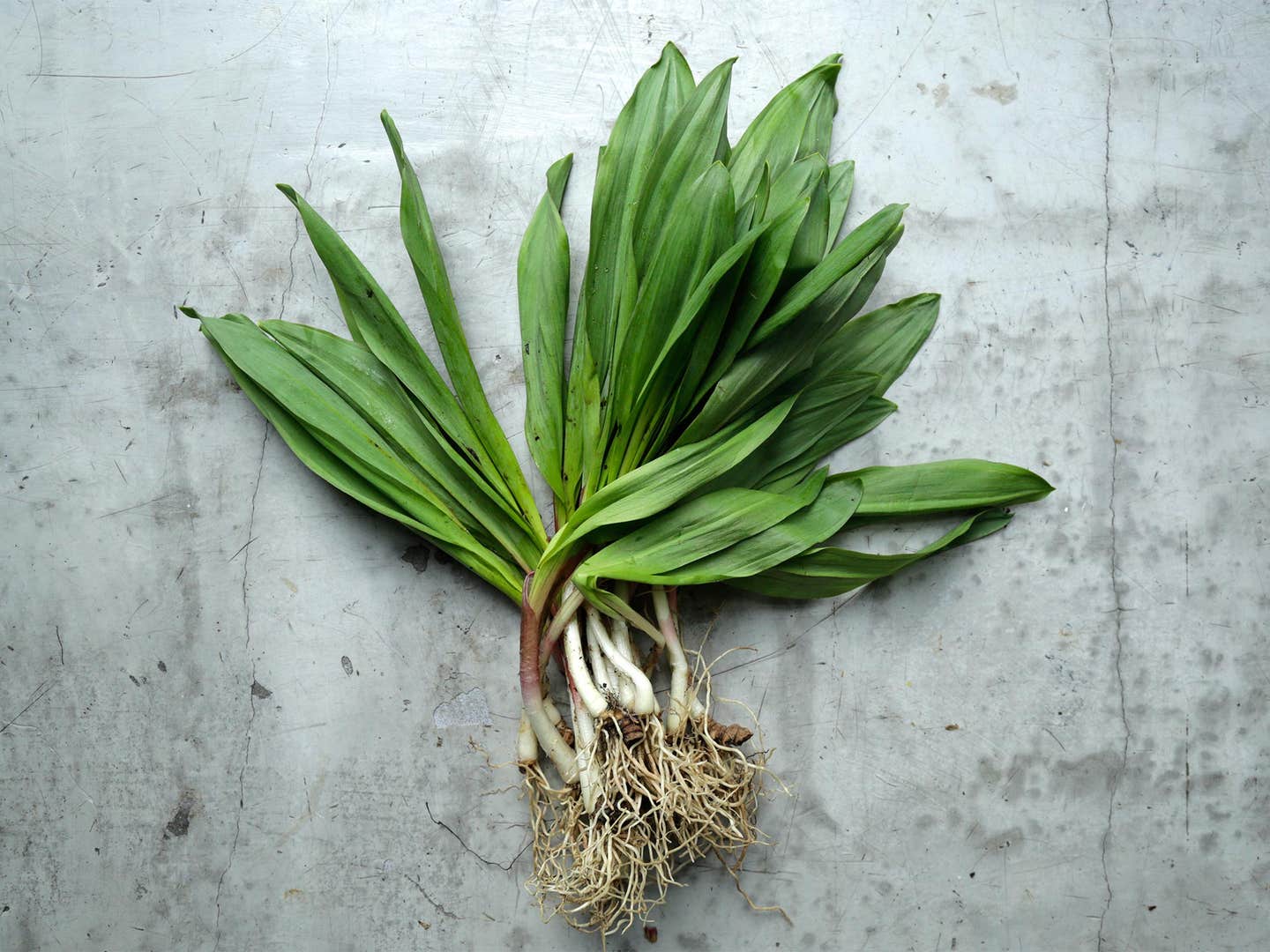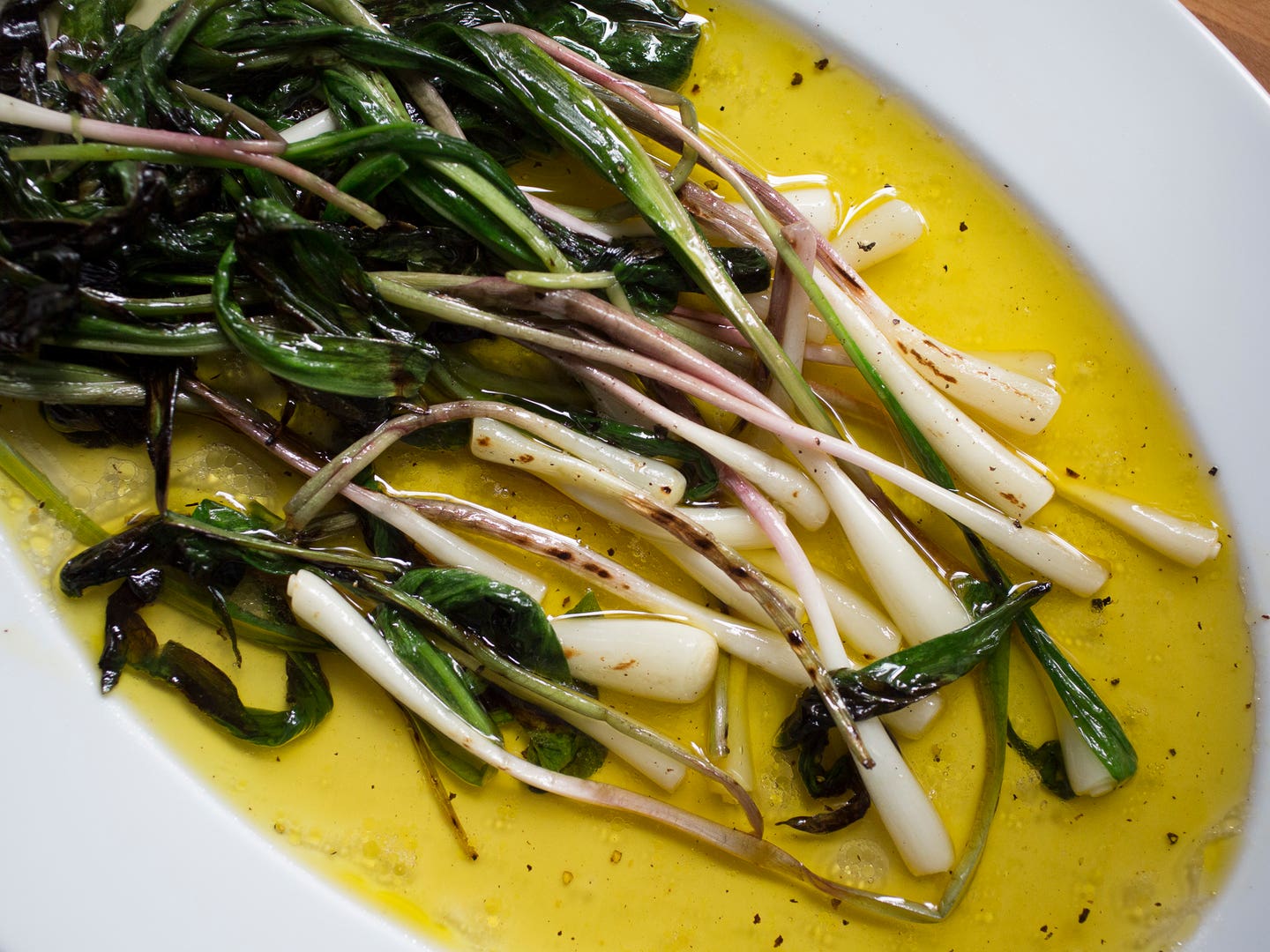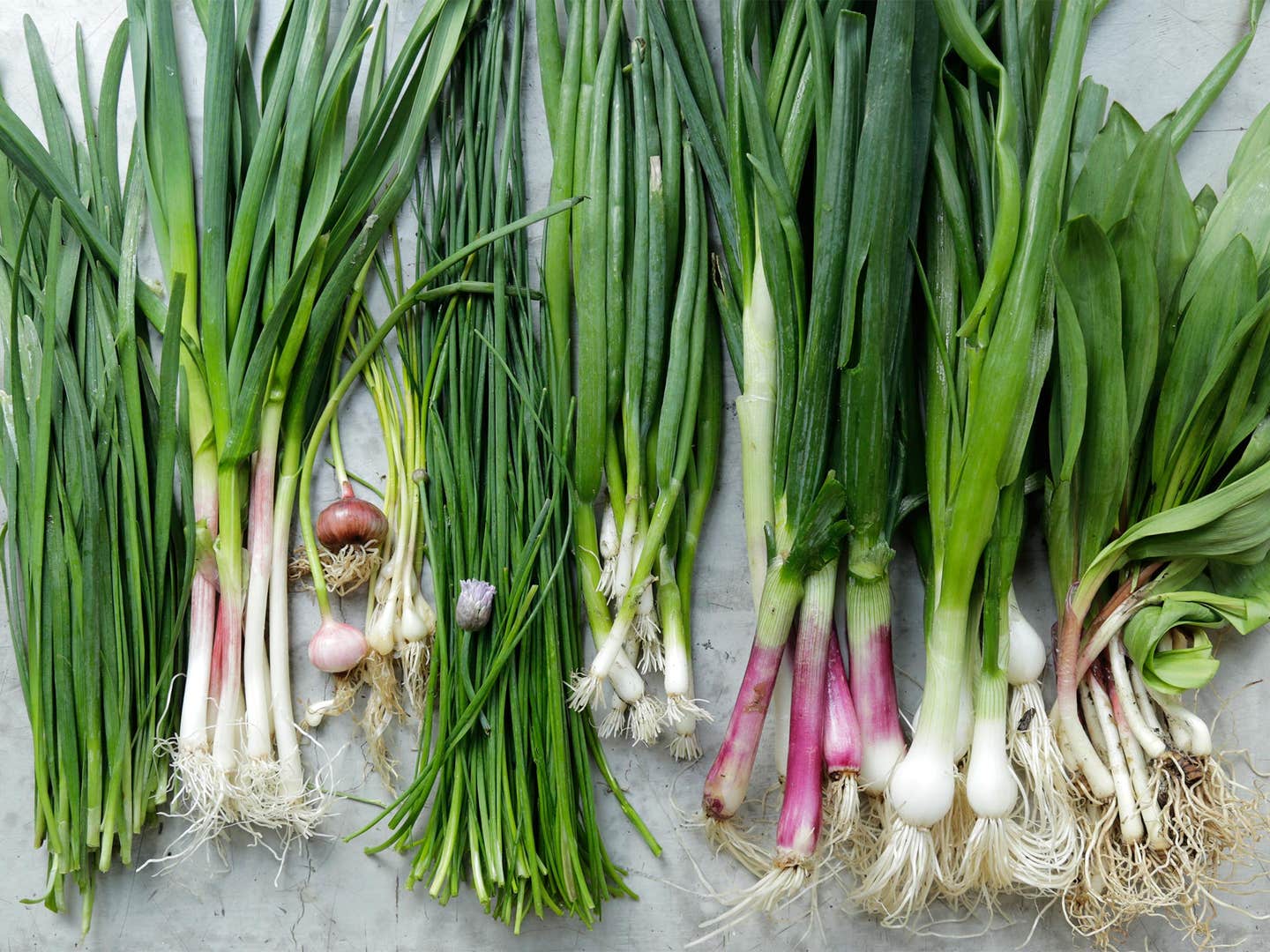
A Beginner’s Guide to Spring Alliums, the Best Early Taste of Spring
What’s the difference between scallions and spring onions? How do you cook garlic chives? Hit the market, then read on
Rhubarb is popping up at markets here and there, but early spring belongs to alliums. The many members of the onion family share similar basic flavors, but they're all so pretty and rewarding on their own that it's hard not to pick up every single one (at least if you're me).
Spring alliums have brighter bouquets and more interesting flavors than the storage onions we use year-round. To make the most of them, here’s a guide to the ones you may see at your local market.
These flat green spears, also known as Chinese chives, have nothing in common with the European kind; they’re an entirely different species, and are often cooked as a vegetable (like string beans) rather than used as an herb.
They do indeed taste garlicky, but they've also got a vegetal thing about them, and a hint of sweetness. They're good on their own, just gently steamed, or added to any dish you'd add garlic to, such as pork dumplings. If you want to keep them raw, be warned: a little go a long way.
When shopping for garlic chives, make sure there aren’t any slippery blades in the bunch. Remove the rubber band that holds the bunch together, wrap a dry paper towel around them, and keep them sealed in a plastic bag. If they’re kept cold and dry, garlic chives should last for up to a week.
Garlic Chives with Pork (Cang Ying Tou)
Try This: Stir Fried Garlic Chives With Pork (Cang Ying Tou) »
Green garlic is just immature garlic. It’s harvested before it can form bulbs or cloves, and can range in size and shape depending on when it’s harvested. It’s usually at farmers’ markets from late spring to early summer.
The entire plant—from the stalk to the baby bulb—is edible, and it’s brighter and milder than mature garlic. Texture-wise, it’s succulent and crisp, but if the stalks are tough, keep them for making stock. Avoid bruised stems and wilty-looking bunches.
Store these wrapped in a damp paper towel and sealed in a plastic bag. Green garlic is best enjoyed within a week of harvest (which is probably the day or day before you got it from your farmer).
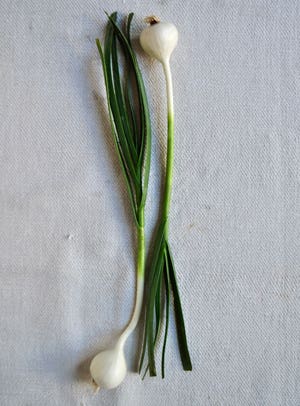
Leeks are kind of always around, but in the springtime, they’re cute and small and more delicate. They’ve been cultivated for so long (ancient Egyptians, Romans, Greeks, and Scots were fans) that it’s unclear where they originated. Not that it really matters, because the most important thing about leeks is that they’re delicious.
Spring leeks tend to be on the smaller, paler side, which means they’re more tender. Look for taught greens and avoid bulging bulbs. Always check the white parts: You want them to have a little give. If they’re completely hard, they’ve got woody cores and won’t soften no matter how long you cook them (though they’re fine for making stock).
Store leeks just like green garlic, for no more than a week.
Spring onions are just like green garlic: onions harvested before they’re fully mature. Their green tops and white and purple bulbs are completely edible, they’re tender, and they’re less likely to make you cry than their fully-grown relatives. They also have less heat, and are a little friendlier when eaten raw.
If your spring onions have little bulbs forming at the bottom, they're young allium cepa (common onions), if they're stick-straight, they're young allium fistulosum (Japanese scallions, which never form bulbs).
Although scallions are available in supermarkets most of the year, really cute ones have been popping up at my favorite farm stands, and I keep bringing them home with me. What’s the difference between scallions and spring onions? They’re basically the same thing—they can come from either the common or Japanese varietal—they’re just picked at an even earlier stage.
Look for spring onions and scallions with happy-looking and upright leaves. Avoid droopy, slimy, or yellowing greens. Keep them stored in the coldest part of the fridge, and try to use them up before you notice any signs of sadness in the greens.
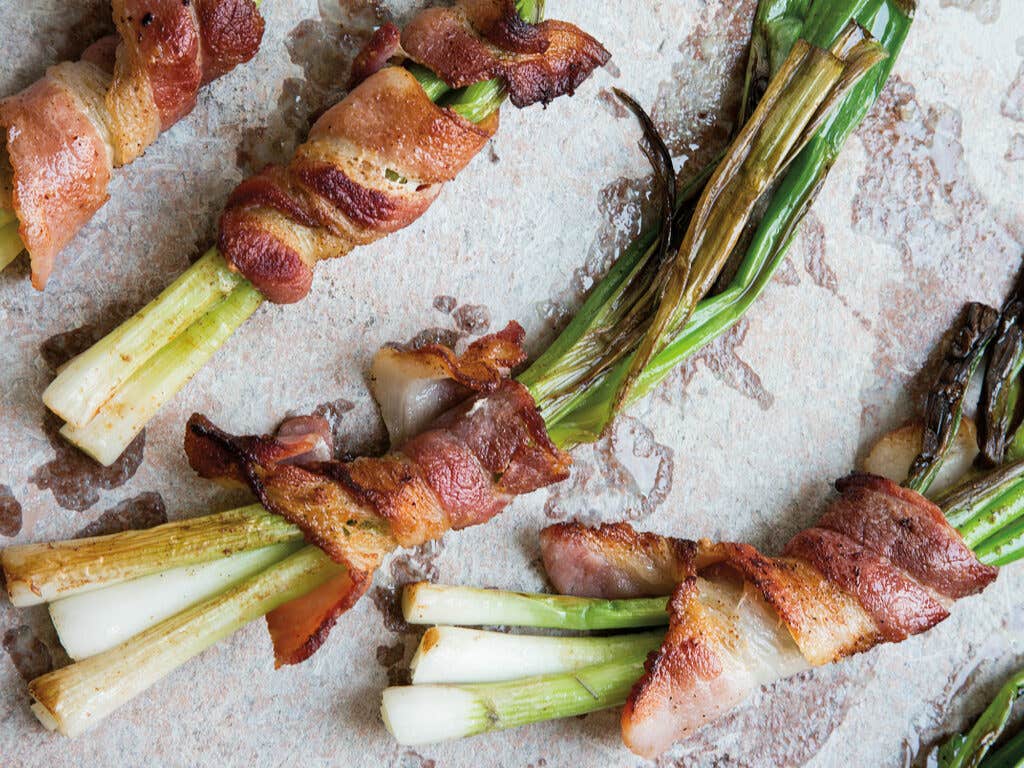
What’s a spring allium guide without at least a tiny mention of ramps? They’re here, they’re photogenic, they’re the funkiest member of the allium family, and they tend to cause a little springtime frenzy. Ramps are wild leeks. They’re native to America and can be found growing in forest soil from Canada, through New England, to Georgia. Cooking will mellow their flavor.
Buy ramps with firm, springy, and vibrant green tops. Store them in the fridge with a damp paper towel wrapped around their roots. And be sure to keep them well-sealed to keep everything in the fridge from taking on their smell.
Keep Reading
Continue to Next Story
